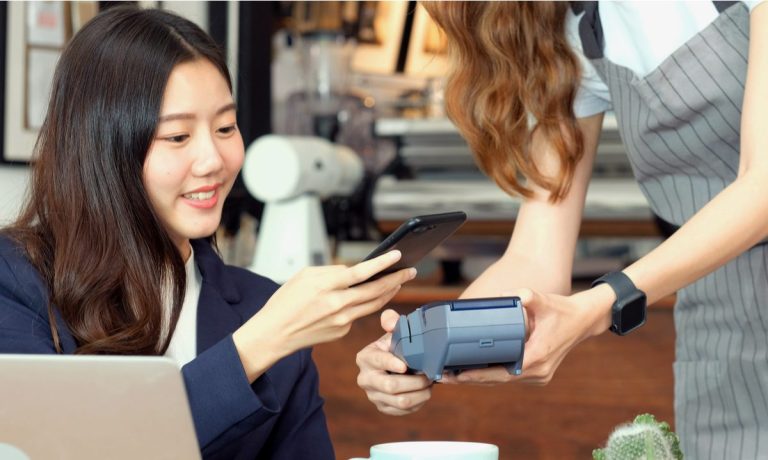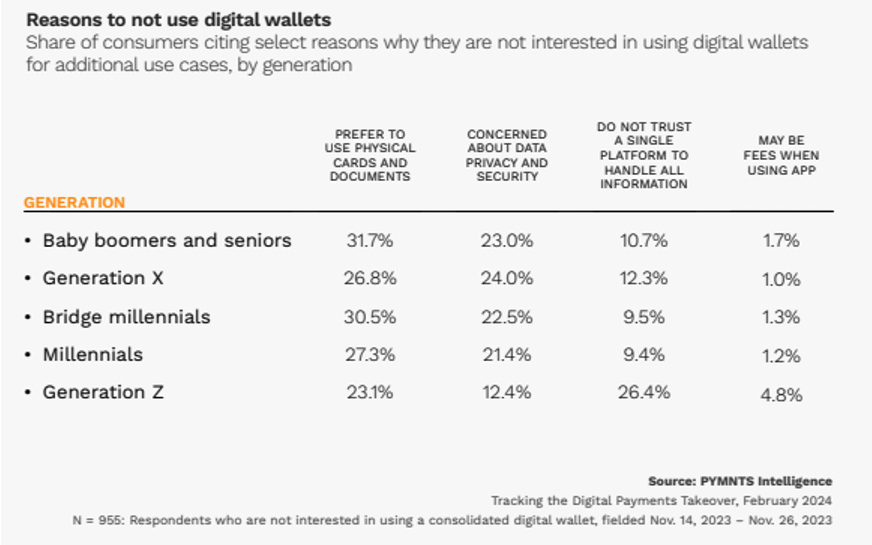
Digital wallets such as Apple Pay and Google Wallet provide consumers with convenient and secure ways to make in-store and online purchases without having to put sensitive credit or debit card data at risk.
PYMNTS Intelligence’s “Tracking the Digital Payments Takeover: Can New Use Cases Drive Consumer Use of Digital Wallets?” found that a high percentage of consumers — especially younger ones — are embracing the streamlined payment methodology. At least for the most part.
The study, which surveyed 2,501 consumers, revealed that 79% of Generation Z consumers are avid digital wallet users, as are 67% of millennials, 62% of bridge millennials and 44% of Generation X consumers. Only baby boomers and seniors appeared to be dragging their feet in adopting digital wallets, as 26% said they regularly use them to make purchases and store key documents.

So, the question is: Why are nearly three-fourths of baby boomers and seniors resistant to using digital wallets? For that matter, why do 21% of Gen Z shoppers, 33% of millennials, 38% of bridge millennials and 56% of Gen X consumers share that reluctance?
Those rejecting digital wallets shared common concerns, for the most part. Perhaps not surprisingly, 32% of baby boomers and seniors said they simply prefer physical wallets. That preference also rings true with 27% of Gen X respondents, nearly 31% of bridge millennials, almost 28% millennials and 23% of Gen Z. Data privacy concerns follow a similar pattern, as 23% of baby boomers and seniors, 24% of Gen X, 23% of bridge millennials, 21% of millennials and 12% of Gen Z are concerned about data privacy.
When it comes to storing card info and documents on a single platform, an inverted pattern emerges. About 11% of baby boomers and seniors and 12% of millennials voiced concerns, whereas 27% of Gen Z said no thanks, which is interesting given that only 12% of Gen Z respondents voiced concerns about data privacy.
It’s hard to guess why the script gets flipped in this third category, but it might be because baby boomers and seniors as well as millennials have years of experience carrying around all their personally identifiable information in physical wallets.